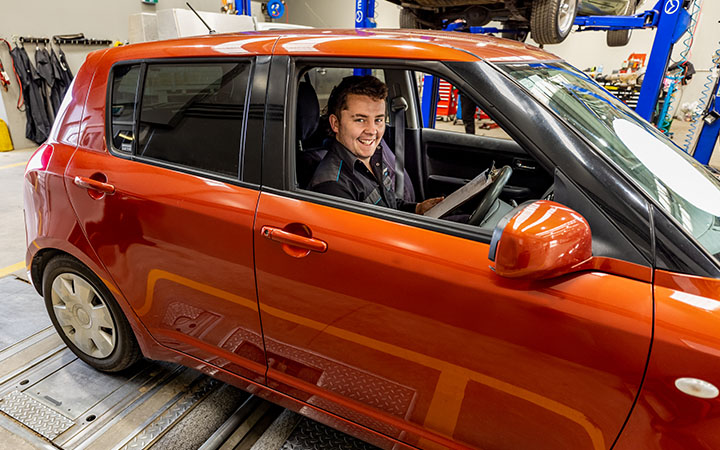For a while there, plenty of car manufacturers and tech companies were talking up the massive potential of driverless cars. Enterprises as diverse as Audi, Uber, Tesla, Apple and Google were investing fortunes in technology and trials. In 2017, the Brookings Institution said US$80 billion had been invested in developing driverless cars. The talk was of a US$7 trillion market for driverless cars.
Then, after all that fanfare, things went a bit quiet. So where are we at? What is the current state of autonomous vehicle technology and the potential market? And when can we expect to see driverless cars in Australia and New Zealand?
What is a driverless car?
Different jurisdictions and manufacturers have slightly different definitions of what exactly constitutes an autonomous car but, in essence, it’s a vehicle that uses a combination of cameras, radars, sensors and artificial intelligence to travel from A to B without the need for a human driver. There are six different grades of autonomy, but a fully autonomous vehicle can navigate to a predetermined destination over ordinary roads without any human intervention. Tesla’s Autopilot, probably the best-known driverless tech, is only a level two. Its full self-driving capability is still in beta testing in the US (and has been for three years).
Are driverless cars operating anywhere in the world?
We’re a long way from the driverless utopia promised by the car and tech giants a few years ago but, nevertheless, the technology is already in commercial use in a few places. In the US, Google is operating a trial taxi-like service with its fully driverless Waymo cars, which operate using cameras, radar and LiDAR sensors, in San Francisco, California, and Phoenix, Arizona. According to reports, the Waymo cars have driven more than a million miles without a driver. The Arizona trial is the largest fully operational driverless service in the world. Closer to home, RAC WA and the Western Australian Government operated the trial of a level four autonomous electric bus in South Perth between September 2016 and June 2023. It was a hit with passengers, with four in five saying that they would be happy to ride in an automated vehicle, and 99% believing the technology could be used for public transport in the future.
Is driverless technology really up to the job?
In popular culture, driverless cars have come in two chief varieties—cool or chaotic. KITT from Knight Rider was the former, Herbie the Love Bug was the latter. As a society, we loved them both. But in real life, we’ve been much less enthusiastic about strapping ourselves into a car that has a mind of its own. The reason? According to a survey by the Pew Research Center in the US in 2021, it’s trust. Almost two-thirds of respondents said they would not travel in a driverless vehicle and 45% said they didn’t want to share the road with driverless vehicles.
But, what’s the experience of riding in one actually like?
A Phoenix resident, David, used Waymo’s service for 90 days and said the technology was better than he expected it to be, and the ride was “easy, safe, comfortable”. When the car encountered an accident on the road he expected it to struggle but “it handled it perfectly, navigating around all of the obstacles and easily continuing on its way”
In San Francisco another driverless car startup, Cruise—which has received more than US$10 billion in funding from the likes of GM, Honda and Microsoft—has also driven more than a million autonomous miles. When Cruise benchmarked their driverless vehicle data against human drivers in a comparable driving environment, they found their vehicles were involved in 54% fewer collisions overall, 92% fewer collisions as the primary contributor and 73% fewer collisions with a meaningful risk of injury. In one million miles, there were only 36 collisions, 94% of which were caused by the behaviour of the other party involved. These accidents resulted in only one injury. That’s quite compelling data.
When will we see driverless cars on our roads?
For all the reticence of some motorists to adopt driverless vehicles, there are places where automation of this kind has become an important part of life. Australia’s mining industry, for example, has adopted driverless vehicles at scale and found them to reduce costs, improve efficiency and productivity, improve safety and reduce the exposure of staff to hazardous conditions. Gina Rinehart’s Roy Hill mine in Western Australia already had 77 autonomous haul trucks and is now adding another 97 to the fleet. The company says this has been possible because they have continued to invest in and improve the tech.
But the open road is a very different environment to a mine site, and the public’s lack of trust in the technology remains. The introduction of driverless vehicles to our roads in Australia and New Zealand is being approached with caution. In Australia, transport authorities are developing regulations and guidelines they hope will be introduced by 2026. NZ authorities are taking an even more cautious approach. A report released late last year acknowledged the potential disruption of driverless vehicles, but questioned whether the technology would even take off.
What is the future for autonomous vehicles?
There are, undoubtedly, still challenges to the widespread adoption of driverless cars. Although the outcomes have shown potential, there is an existing sense of distrust among customers due to the novelty of the technology. We like the idea of the cool KITT, but we’re worried we might end up with the slightly more chaotic Herbie or, worse still, Stephen King’s vehicle of terror, Christine.
Arguably, the recent rationalisation in investment by manufacturers suggests they aren’t sure the market is there for driverless vehicles just yet, either. But the developments we’ve seen to date have already given us adaptive cruise control, parking assistance, lane-keeping assistance and automatic emergency braking. So, even if we’re still sitting in the driver’s seat for a few years to come, there’s little doubt technology that takes the human element out of driving will continue to play an increasing role in our driving experience.


